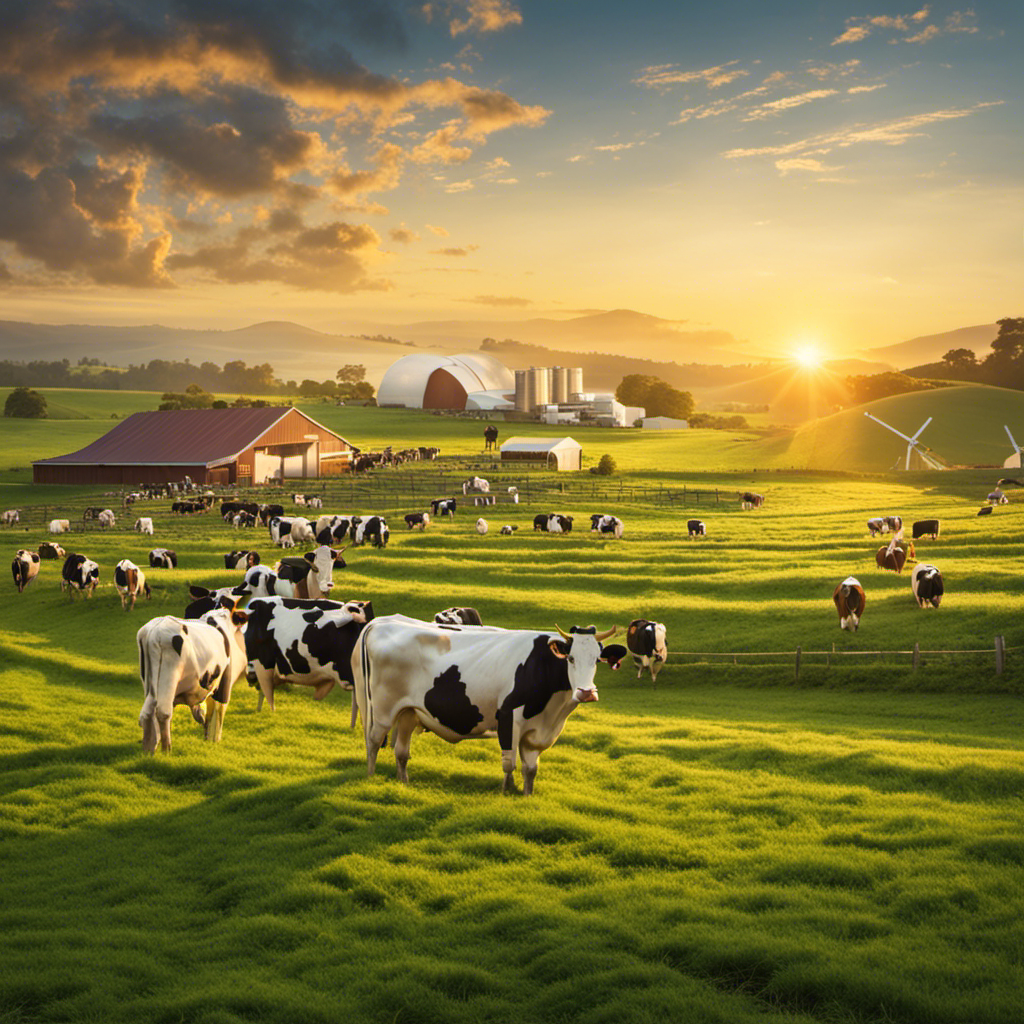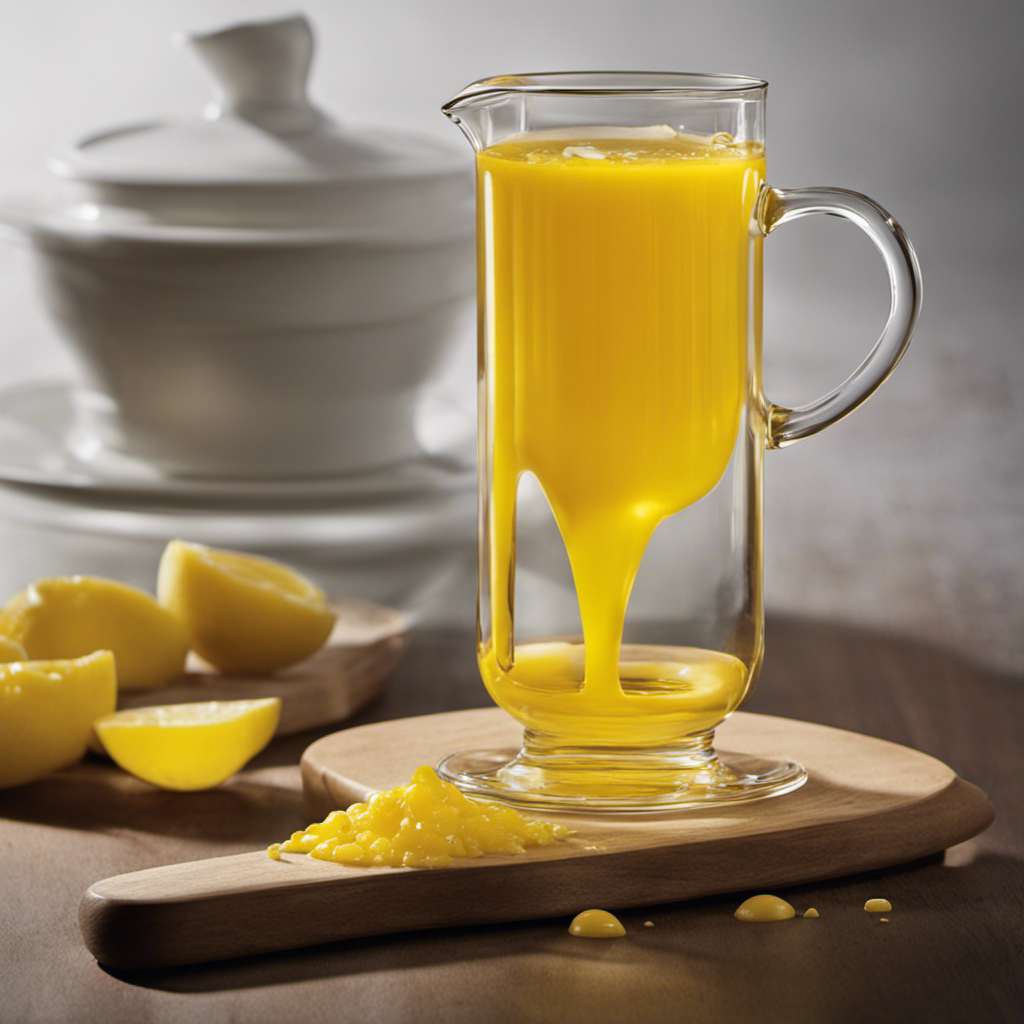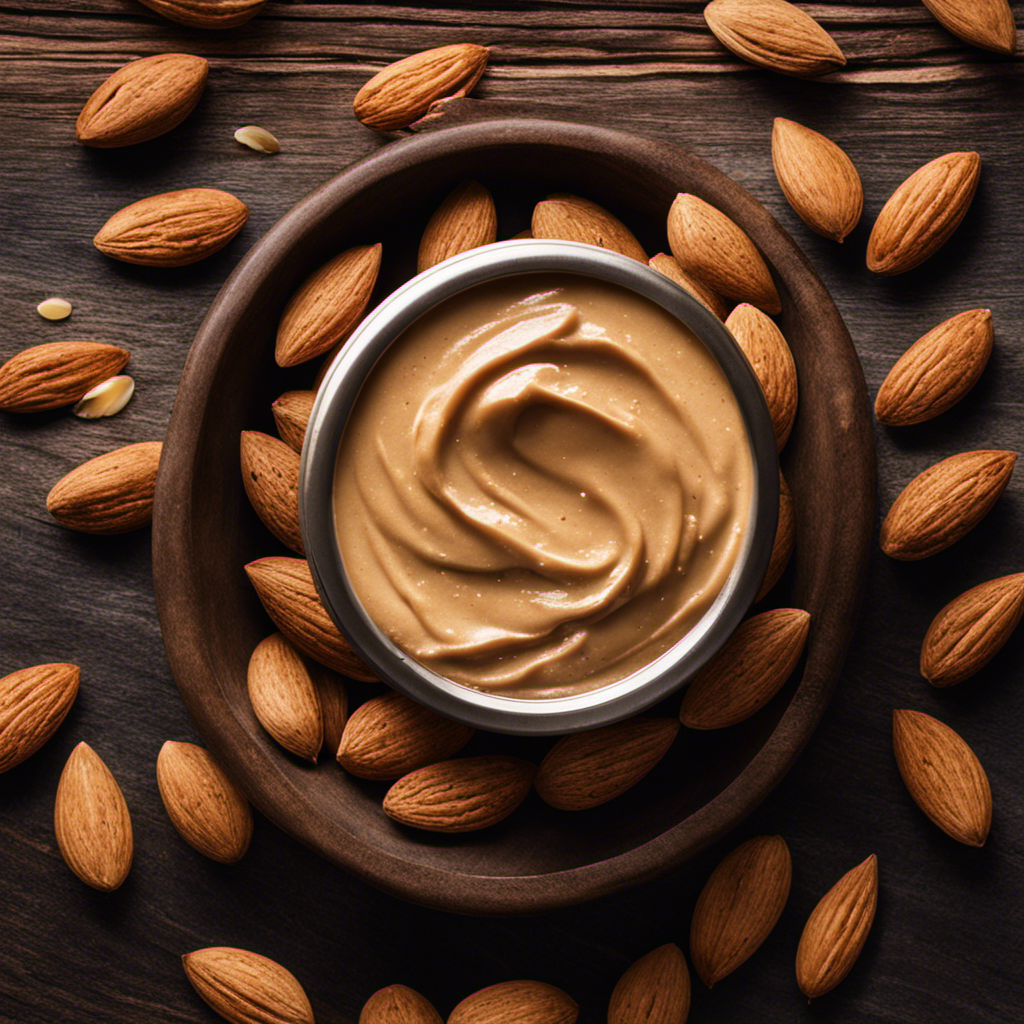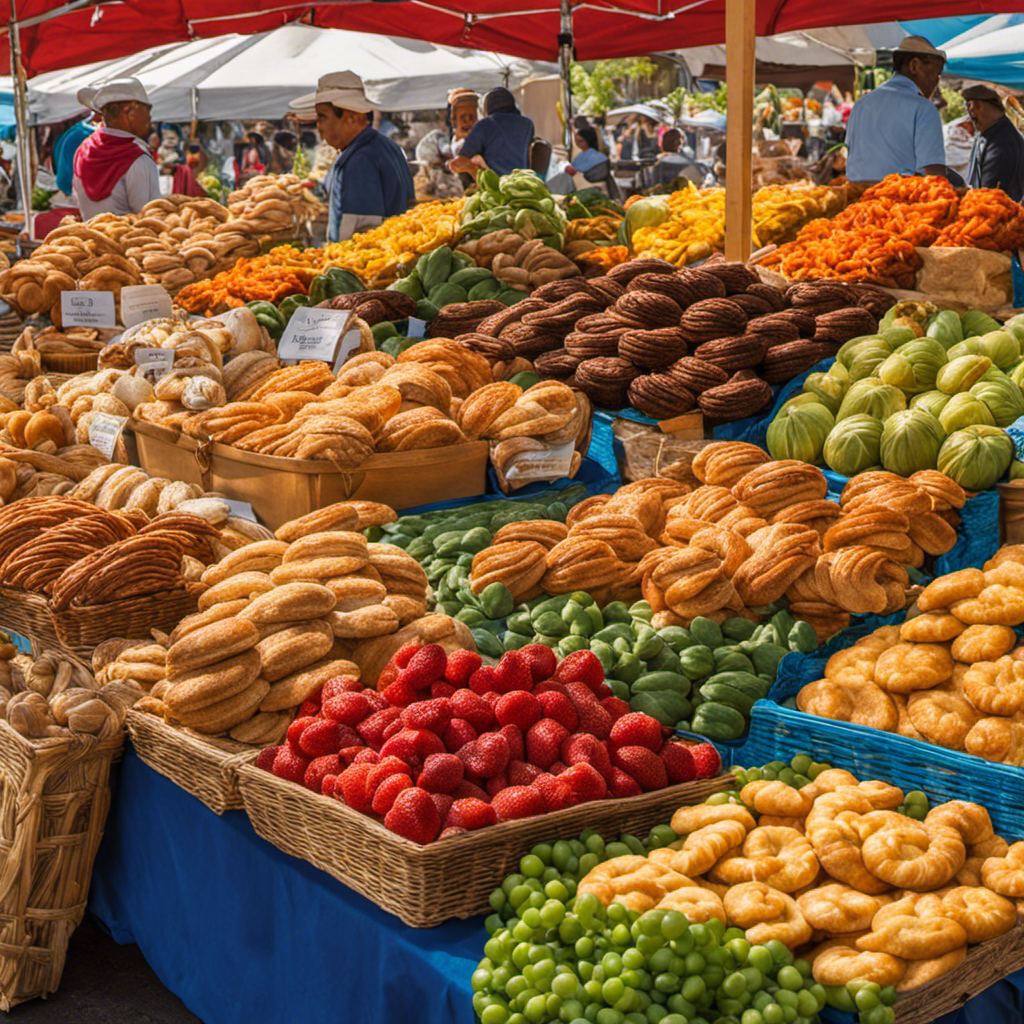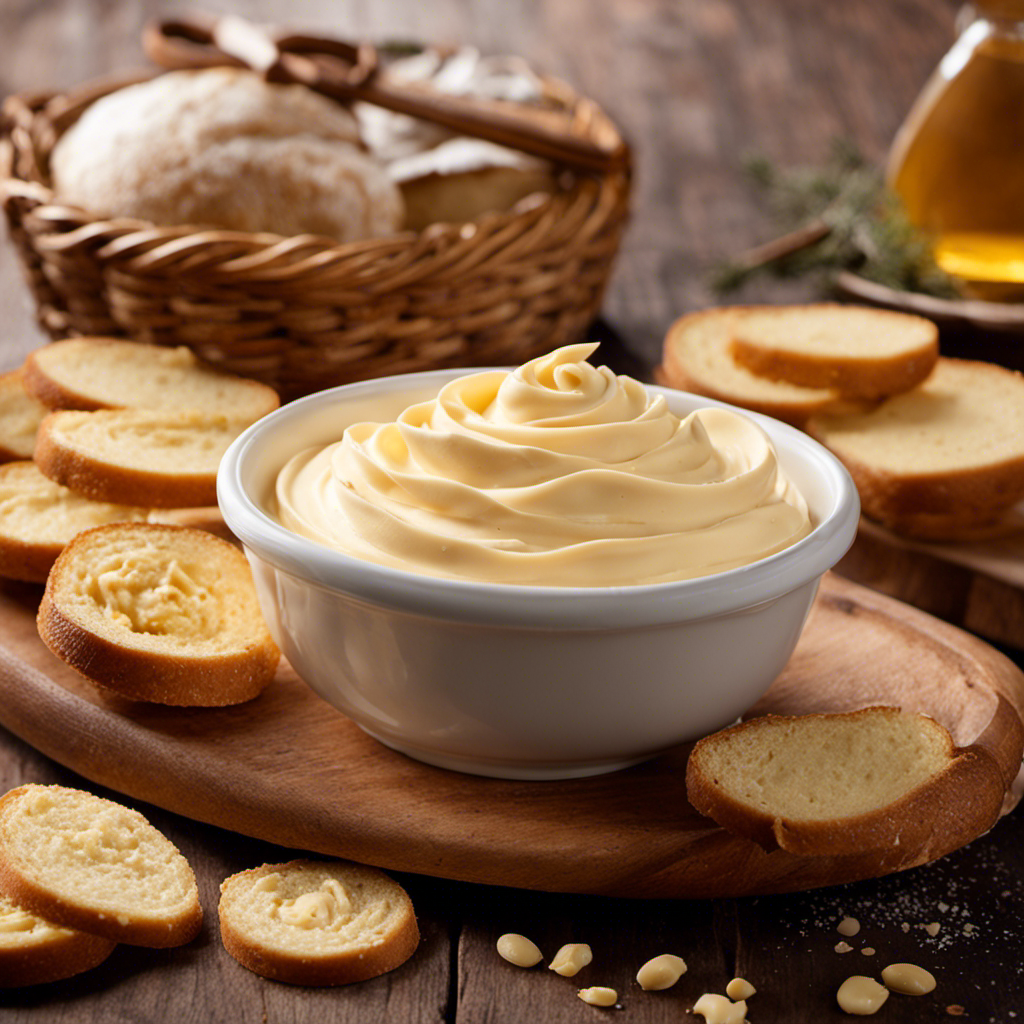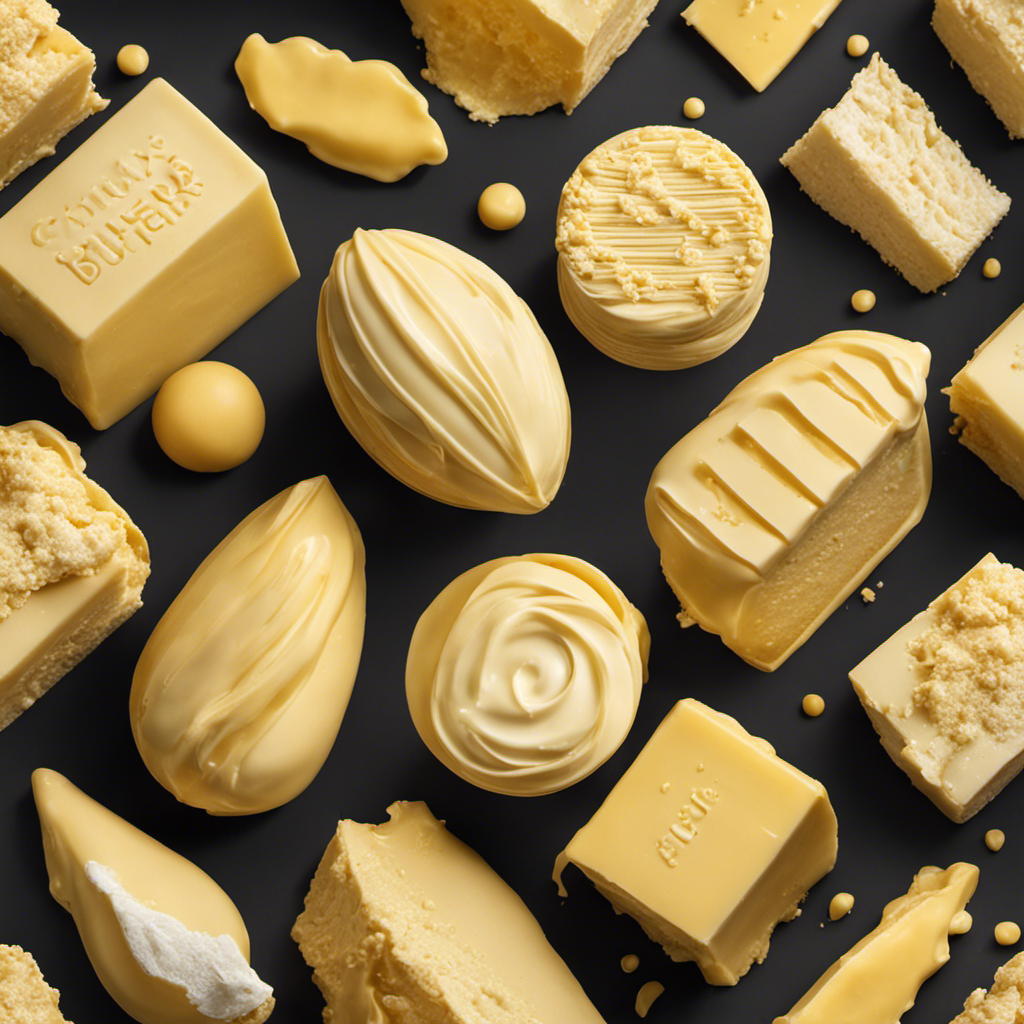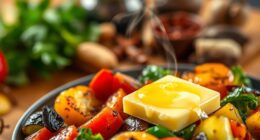As a fan of butter, I have noticed a concerning trend of rising prices for this delicious spread. It seems like every trip to the grocery store leaves my wallet a little lighter.
But why is butter so expensive in 2022? To fully understand this phenomenon, we must delve into historical price trends, the impact of supply and demand, and the various factors contributing to the skyrocketing costs.
Let’s explore the butter industry and uncover the hidden forces at play.
Key Takeaways
- Climate change is a major factor contributing to the high cost of butter, as it affects the availability and quality of butter ingredients, grazing conditions, and the health and productivity of dairy cows.
- Increasing demand for butter, limited production capacity, and rising transportation costs also contribute to the rise in butter prices.
- Inflation plays a significant role in the high cost of butter, as it leads to a general rise in prices, increased production costs, currency devaluation, and inflation expectations.
- Government regulations, such as price controls, trade restrictions, subsidies, and food safety regulations, can also impact butter prices.
Historical Butter Price Trends
If you’re wondering why butter is so expensive in 2022, it’s important to look at historical butter price trends. Analyzing butter consumption patterns over the years reveals a significant impact of climate change on the industry.
As the global climate undergoes shifts, it affects the availability and quality of key ingredients necessary for butter production, such as dairy cows’ feed. With rising temperatures and unpredictable weather patterns, dairy farmers face challenges in maintaining optimal grazing conditions and ensuring consistent milk production. Consequently, this leads to a decrease in butter production, resulting in a limited supply and higher prices.
Additionally, climate change also affects the overall health and productivity of dairy cows, further impacting the butter market. These factors, combined with increasing demand, contribute to the current rise in butter prices.
Impact of Supply and Demand on Butter Prices
The high demand and limited supply are driving up the price of butter in 2022. As butter consumption patterns continue to rise, climate change is impacting the production and availability of this dairy product.
Here are a few key factors contributing to the current situation:
-
Decreased milk production: Climate change has led to extreme weather events, such as droughts and heatwaves, which negatively affect milk production. As a result, there is less milk available for butter production.
-
Increased feed costs: Changes in weather patterns have also affected the availability and cost of animal feed. Farmers are facing higher expenses to feed their cows, which in turn leads to increased prices for butter.
-
Growing demand for natural fats: Consumers are increasingly opting for natural fats, like butter, instead of artificial substitutes. This trend has further driven up the demand for butter, putting additional pressure on its price.
-
Global trade disruptions: Trade disruptions caused by the COVID-19 pandemic and geopolitical tensions have limited the availability of imported butter, exacerbating the supply-demand imbalance.
Factors Contributing to Rising Butter Costs
As a data-driven industry analyst, I’d like to discuss the factors contributing to the rising costs of butter production.
One key factor is the interplay between supply and demand. Increased consumer demand for butter has outpaced the available supply, resulting in higher prices. Producers are struggling to meet the market’s needs, leading to this imbalance.
In addition, production costs have increased due to various factors. Rising feed and energy costs have had a significant impact on the overall price of butter. These factors further add to the challenges faced by producers.
Double new line.
Supply and Demand
Butter’s high prices in 2022 are primarily due to supply and demand factors. Consumer behavior and butter consumption trends have played a significant role in driving up prices. Increased consumer demand: Consumers have been showing a growing preference for natural and wholesome foods, leading to a surge in butter consumption. Limited supply: The production of butter has faced challenges, including a shortage of milkfat, which is a key ingredient in butter production. Global market dynamics: The global demand for butter has been on the rise, leading to increased competition for limited supplies. Trade restrictions: Trade restrictions and tariffs on dairy products in certain regions have further constrained the availability of butter, contributing to the price increase.
These factors combined have created a tight supply-demand balance, resulting in the high prices we are currently experiencing.
Production Costs Increase
You might be wondering why butter prices have increased recently, and one contributing factor is the rise in production costs.
As demand for butter continues to grow, producers are facing higher expenses in the form of raw materials, labor, and energy. The increased demand for butter has put pressure on producers to meet the market’s needs, leading to a higher cost of production.
Additionally, efforts to improve production efficiency, such as investing in modern equipment and implementing new technologies, also come at a cost. These factors have collectively contributed to the increase in production costs, ultimately leading to higher butter prices for consumers.
However, it’s important to understand the role of global markets in butter pricing, as they play a significant role in determining the final cost of this popular dairy product.
The Role of Global Markets in Butter Pricing
The fluctuating demand and supply in global markets are affecting the pricing of butter in 2022. As an industry analyst, it is evident that the butter market is heavily influenced by the dynamics of import and export. Here are the key factors shaping the current butter pricing landscape:
-
Volatility in global market fluctuations: Unpredictable shifts in consumer preferences and economic conditions across countries are impacting the demand for butter, leading to price fluctuations.
-
Import and export dynamics: The balance between butter imports and exports plays a crucial role in determining its price. Changes in trade policies, tariffs, and trade agreements can significantly impact the availability and cost of butter in different markets.
-
Competitive pricing strategies: Butter producers and suppliers closely monitor global market trends to adjust their pricing strategies. Intense competition in the butter industry further contributes to price volatility.
-
Currency exchange rates: Fluctuations in currency exchange rates can impact the cost of importing and exporting butter, ultimately affecting its pricing in different markets.
Government Regulations and Policies Affecting Butter Prices
As an industry analyst, I’ve been closely studying the impact of government regulations and policies on butter prices.
Two key points that deserve attention in this discussion are the impact of price controls and the influence of trade restrictions.
Price controls, such as government-imposed caps on butter prices, can have a significant effect on the overall supply and demand dynamics in the market, potentially leading to shortages or surpluses.
Similarly, trade restrictions, such as tariffs or import quotas, can disrupt the flow of butter across borders, ultimately affecting both availability and pricing.
Price Control Impact
It’s unclear how price controls will impact the current cost of butter in 2022. However, it is important to consider the potential consequences of price controls on the butter market.
Here are some key points to consider:
-
Decreased market competition: Price controls can discourage new entrants into the butter market, leading to a decrease in competition. This could result in fewer options for consumers and potentially higher prices in the long run.
-
Quality concerns: When prices are controlled, producers may be incentivized to cut corners on quality to maintain profitability. This can lead to a decline in the overall quality of butter available in the market.
-
Supply and demand imbalances: Price controls can disrupt the natural supply and demand dynamics of the market. If prices are kept artificially low, it may result in a shortage of butter as producers are unable to cover their costs.
-
Black market activity: When prices are controlled, there is a higher likelihood of black market activity as individuals seek to profit from the price disparity. This can further distort the market and lead to inefficiencies.
Overall, while price controls may aim to make butter more affordable, they can have unintended consequences that may negatively impact the market.
Trade Restrictions Influence
Consider the potential impact of trade restrictions on my ability to access a variety of affordable goods and products.
Trade barriers, such as tariffs and quotas, can significantly affect international trade and ultimately drive up prices for consumers.
When countries impose restrictions on imports, it reduces competition and limits the availability of products in the market. This lack of competition allows domestic producers to charge higher prices, as consumers have limited alternatives to choose from.
Additionally, trade restrictions can disrupt global supply chains, leading to higher production costs and further price increases.
For example, if a country imposes a tariff on imported butter, it may result in higher prices for consumers who rely on imported butter for their daily needs.
Therefore, it is crucial to carefully consider the potential consequences of trade restrictions on affordability and access to a variety of goods.
Alternative Options for Butter Substitutes
You can try using margarine or coconut oil as substitutes for butter if you’re looking for alternatives. These vegan butter alternatives can be easily made at home, providing a healthier and cruelty-free option. Here are four options to consider:
-
Margarine: Made from vegetable oils, margarine can be used as a 1:1 replacement for butter in most recipes. It is lower in saturated fat and cholesterol-free.
-
Coconut oil: This versatile oil adds a rich flavor to baked goods and can be used as a spread. It is high in healthy fats and contains medium-chain triglycerides, which provide various health benefits.
-
Avocado: Mashed avocado can be used as a spread or as a substitute for butter in baking. It is a good source of healthy fats and adds a creamy texture to recipes.
-
Nut butters: Almond, cashew, or peanut butter can be used as a spread or in baking. They add a nutty flavor and are packed with protein and healthy fats.
These homemade butter substitutes not only cater to vegans but also offer a range of health benefits.
Frequently Asked Questions
How Does the Taste of Butter Affect Its Price?
When it comes to the taste of butter, it plays a significant role in determining its price. Consumer preferences for butter flavors can drive up demand, leading to higher prices in the market.
What Is the Nutritional Value of Butter Compared to Other Spreads?
When comparing the nutritional value of butter to other spreads, it’s important to consider its high fat content. While butter does provide some essential vitamins, its saturated fat can have health implications.
Are There Any Environmental Factors That Influence Butter Prices?
Environmental regulations and climate change impact can significantly influence butter prices. These factors can affect the availability and cost of key ingredients, such as milk and feed for cows, ultimately impacting the production and pricing of butter.
How Do Different Brands and Types of Butter Vary in Price?
Different brands and types of butter vary in price due to factors like production methods and quality. Market demand and supply dynamics also play a role in determining the cost of butter.
Can Personal Preferences and Cultural Differences Affect the Demand for Butter and Its Price?
Cultural preferences and consumer habits play a significant role in the demand for butter. Regional availability and import/export policies also affect its price. Understanding these factors helps analyze why butter may be expensive in 2022.
Conclusion
In conclusion, it’s evident that the rising cost of butter in 2022 is influenced by various factors. These factors include supply and demand dynamics, global market conditions, government regulations, and alternative options for butter substitutes.
As we delve deeper into the data and analyze industry trends, it becomes clear that butter prices have reached new heights due to a combination of these factors. It may seem coincidental, but understanding these market forces empowers us to make informed decisions and navigate the ever-changing landscape of the butter industry.
